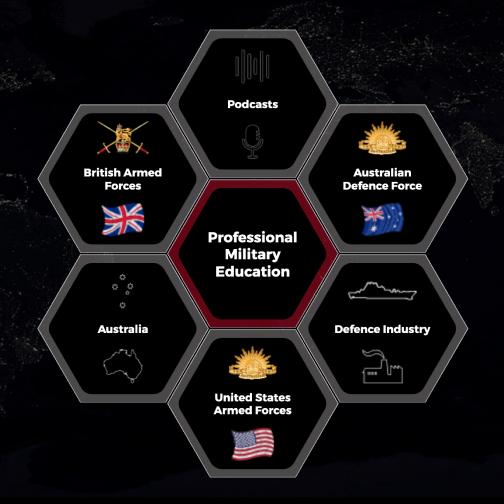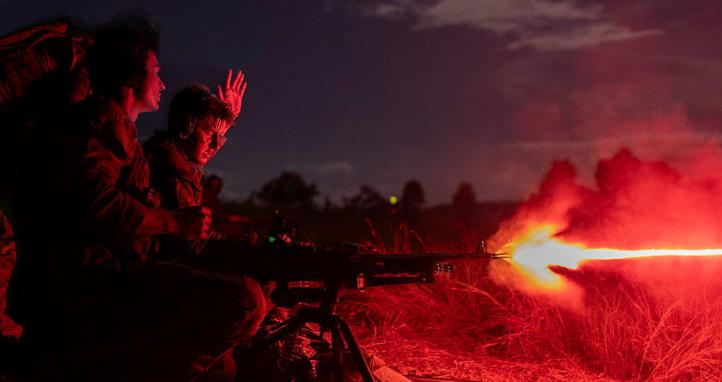This article was selected by Commander Space Command as the winner of the Cert Cito Ex Astris writing competition.
Introduction
As the Royal Australian Corps of Signals (RA Sigs) celebrates its centenary, it is timely to reflect not only on its proud history but also on its future in an era increasingly defined by the space domain. The strategic importance of space to the Australian Defence Force (ADF) has never been clearer. From satellite communications (SATCOM) and space domain awareness (SDA) to electronic warfare (EW) and resilient command and control (C2) architectures, the Corps' skillsets are uniquely positioned to bolster Australia’s space power.
This essay provides an informal reflection on five key themes identified by Space Command and The Cove, and explores how RA Sigs can address each of these challenges and opportunities. It argues that if RA Sigs does not transition from a terrestrial enabler to a direct integrator and operator within the space domain, it risks not seizing the opportunity to effectively contribute to the ADF's future force. Given the accelerating contest in the space domain, RA Sigs' unique technical and operational strengths position it to bridge critical workforce, resilience, and operational gaps, but this requires deliberate, resourced transformation.
Workforce: Engineering a Joint Space Cadre
RA Sigs has long stood at the forefront of Defence’s digital and electromagnetic transformation. As the ADF formalises dedicated Space Officer and Space Operator employment categories by 2026, RA Sigs is uniquely positioned to serve as the core terrestrial contributor to this evolving capability domain. Signals personnel already operate across the electromagnetic spectrum, integrating terrestrial, satellite, and cyber networks to deliver assured, secure, and resilient communications – critical enablers in the increasingly contested space domain.
With Space categories projected to reach full operational staffing only by 2030, a capability gap persists that must be filled by trusted, technically proficient personnel. RA Sigs offers precisely that: a corps grounded in systems engineering, electromagnetic warfare, and C2 node integration. These attributes provide a seamless bridge to space operations roles, especially in mission planning, operational C2, and joint/combined force coordination; but without a clear support transition plan, there is a risk of redundancy. RA Sigs must formally commit pathways to second its officers and soldiers into relevant space positions, while also embedding space-focused content in RA Sigs career progression courses. Failure to do so will see RA Sigs excluded from doctrinal and operational shaping of space effects, limiting its future relevance.
Cultural resistance within RA Sigs and concerns about diluting terrestrial competencies are valid. However, without cross-pollination, the Corps risks irrelevance in multi-domain operations where space effects are integral. Notably, RA Sigs’ dual-pathway career model, encompassing both generalists and specialists, enables the corps to support space operations across all levels of command. Generalist officers bring operational planning acumen and interagency coordination experience suited to Space Liaison roles in headquarters, or Theatre Coordination Elements. Specialists, meanwhile, offer subject matter expertise in SATCOM, EW, cyber assurance, and digital network defence – capabilities that underpin both the space domain’s enabling effects and its intrinsic vulnerabilities.
Partner nation models reinforce this direction. The U.S. Army Signal Corps supports U.S. Space Command through embedded communications planners, information transport specialists, and spectrum engineers (Joint Chiefs of Staff, 2020). The UK Royal Corps of Signals maintains joint responsibilities within SKYNET operations, cyber integration, and electromagnetic protection for space-linked infrastructure. Germany’s Cyber and Information Domain Service (CIR) incorporates signals intelligence and cyber-EW operators into its joint space framework, supporting both resilience and allied interoperability.
RA Sigs must now elevate its posture from space enabler to space force integrator – embedding its expertise directly into the evolving operational frameworks that define space as a contested, congested, and competitive domain. This shift will not only assist in securing Australia’s space sovereignty, but also redefine RA Sigs’ relevance within the joint force over the next century.
Resilience: Building a Survivable and Redundant Architecture
RA Sigs has extensive experience building and defending resilient, distributed networks – skills directly transferable to the space mission. Corps-led efforts should further focus on developing mobile, hard-to-target C2 nodes, deploying electromagnetic spectrum monitoring units to detect interference, and integrating satellite communications with tactical radio networks to build multi-path redundancy. Although these actions support the US Defence objective of space mission assurance as outlined in Joint Publication 3-14 (JP 3-14, Joint Chiefs of Staff, 2020) and Space Doctrine Publication 3-0 (SDP 3-0, United States Space Force, 2023), critics may argue the ADF lacks the budget or personnel to build such hybrid networks, but not doing so risks single-point failures in conflict, where communications are likely first targeted.
Looking to the future, three interdependent pillars will likely underpin a resilient Australian space architecture:
- Commercial integration
- Allied partner capabilities and,
- ADF-owned and operated systems.
RA Sigs has a critical role to play across each potential pillar. In commercial ventures, RA Sigs members could oversee communications security integration, provide technical validation, and contribute to SATCOM and cyber assurance frameworks. When engaging with allies, the Corps' experience in coalition operations and interoperability would be indispensable in ensuring seamless joint communications and mission planning. Finally, in sovereign ADF-operated systems, RA Sigs operators will remain at the forefront of ground segment integration, satellite uplink/downlink management, and mobile command post deployment. Embedding Corps expertise across these three vectors is essential to achieving the layered resilience envisioned in Concept SELENE (Australian Defence Force, 2024).
To effectively advance space resilience in the short to medium term, the following priorities should be adopted:
- Secure and Mobile Ground Infrastructure: Prioritise deployable, survivable ground systems for C2 and SATCOM that are hardened against jamming, cyber, and kinetic threats. RA Sigs can continue to lead in designing and operating mobile satellite ground terminals and hardened communications nodes.
- Electromagnetic Spectrum Monitoring and Defence: Detecting and countering electromagnetic interference is essential. RA Sigs should continue to lead the development of EW and spectrum surveillance teams focused on uplink/downlink integrity.
- Multi-Path Communications and Interoperability: Further develop layered, redundant communications to avoid reliance on any single architecture. RA Sigs has the expertise to design and integrate these hybrid C2 networks with current and future space architecture.
- Personnel Integration into Allied and Commercial Networks: Since resilience is not only technical but organisational, RA Sigs personnel should be embedded with allied space commands and commercial satellite operators acting as the conduit to facilitate coordination, threat response, and best-practice sharing.
Operations: Beyond Enabling, Into Operating
Space control operations are becoming increasingly important to protect Australia’s freedom of action in space. This includes both defensive and offensive counterspace measures such as jamming, spoofing, or cyber disruption of adversary space assets (Swope et al., 2024, pp. 3-5). Signals personnel should therefore contribute to space order of battle development, signal propagation analysis, and cross-domain targeting effects planning. These roles are envisioned in the ADF's Concept SELENE (Australian Defence Force, 2024) as necessary contributions to theatre operations and allied interoperability. While RA Sigs has traditionally supported space-enabled effects such as SATCOM, it must now transition to treating space as an operational domain in its own right. This includes embedding signals personnel in Blue/White Cell positions during joint and combined space exercises and leading EW planning in support of counterspace operations. Some may argue counterspace operations should remain the purview of dedicated space professionals, yet RA Sigs' terrestrial and EW skills are precisely what is required to operationalise space effects within land and joint operations.
To further deepen RA Sigs’ operational relevance in the space domain, the Corps should explore/further develop the following roles:
- Space Mission Planning Cell Integration: Signals personnel should be embedded in Joint Space Planning Groups or Theatre Space Coordination Elements to provide communications threat assessments, spectrum management insights, and EW planning.
- Tactical Space Control Teams: RA Sigs could integrate into future space deployable teams trained to detect and mitigate threats such as Global Positioning System (GPS) spoofing or SATCOM jamming. These teams would provide tactical-level awareness and resilience during operations.
- C2 of Ground-Based Space Systems: The Corps should seek to share operational control of, space surveillance radars, and laser ranging sites in addition to ground-based SATCOM gateways – transitioning RA Sigs into a direct operational role supporting space superiority.
- Signals-Led Red-Teaming and Mission Assurance: RA Sigs can support force preparedness through red-teaming activities that emulate adversary jamming and cyber actions against space C2 networks, validating resilience measures and refining doctrine.
- Coordinated C2 of On-Orbit Communications Missions: RA Sigs contribute to the coordination and operational planning of on-orbit communications payloads, particularly for coalition SATCOM assets. Moving forward, noting potential for sovereign on-orbit architecture, RA Sigs must be integrated with orbital C2 structures (including potential commercial partnerships). This would see RA Sigs responsible not only for dynamic link tasking, bandwidth prioritisation, and electromagnetic deconfliction across dispersed orbital constellations, but also synchronised with orbital bus operations.
Other nations are moving decisively in this direction. French signal units are integrated with the French Space Agency (CNES) and French Space Command to support both communications and EW for space resilience. Germany’s CIR contributes to NATO space working groups and uses signal intelligence for domain awareness and cyber-space protection. The U.S. Army employs signalers as mission planners and liaisons for space operations centres, illustrating the role RA Sigs could play in the ADF’s own Combined Space Operations efforts. These precedents make a compelling case for RA Sigs to adopt a more assertive operational role within Australia’s space posture.
Training: From Awareness to Mastery
RA Sigs already delivers a robust and well-established training continuum that spans tactical communications, EW, cybersecurity, and command support systems. This foundation equips personnel with the technical versatility and operational adaptability needed for multi-domain operations. However, to fully prepare for the unique challenges of space warfare, RA Sigs must incorporate emerging space-specific training content into its existing courses. Although training pipelines are already crowded, prioritisation is essential as space effects will underpin all future operations; lack of integration now will increase future remediation costs.
Short-term priorities include embedding space content within existing officer and soldier career courses. For example, RA Sigs Officer Basic and Advanced Courses should introduce foundational SDA training (including basic orbital mechanics), spectrum conflicts in space, and SATCOM link budgeting. Specialist training pathways should expand to include certifications in space operations and support roles in space control.
Longer-term, RA Sigs should “buy or borrow” by partnering with Defence Science and Technology Group (DSTG), Space Command, and Academia to develop modular training programs. Topics should include: advanced SDA training, orbital order of battle, counterspace threat identification, and integration with cyber-EW effects. These programs must mirror the approach outlined in SDP 3-0 (United States Space Force, 2023), where space operations are viewed across physical, cyber, and link layers of warfare. Training design should include the development of tactics, techniques, and procedures to support multi-domain operations. Incorporating the ADF Force Generation Cycle will ensure alignment between training delivery and operational preparedness.
As Defence builds its joint space training continuum, RA Sigs should support integration efforts – offering its instructors, systems, and innovation culture to create a truly interoperable space-literate force. These training programs should also recognise the value of RA Sigs’ specialist and generalist pathways; customised training modules aligned with these pathways will help generate mission-ready space personnel within the Corps.
Innovation: Fighting Asymmetrically in the Space Domain
RA Sigs has long been Defence’s innovation corps. In the space domain, innovation must be asymmetrical, survivable, and integrated; it must also move beyond concepts to demonstrable capabilities.
An innovative opportunity for RA Sigs lies in the further development/use of space-based assets to support Electromagnetic Control (EMCON) operations. EMCON is a critical component of manoeuvre warfare, enabling force protection by limiting or shaping electromagnetic emissions to avoid detection and targeting. Traditionally, EMCON requires significant planning and trade-offs in communications capability, often relying on line-of-sight, fibre, or silence protocols. Space capabilities, especially low-probability-of-intercept (LPI) satellite communications and space-based signal monitoring can enhance EMCON by providing secure, indirect, and reduced-signature options for data transmission. For instance, RA Sigs could explore the integration of low-earth orbit (LEO) commercial SATCOM solutions to support dispersed command posts while minimising Radio Frequency (RF) footprint. Additionally, space-based electronic intelligence feeds could be used to detect adversary Intelligence, Surveillance & Reconnaissance (ISR) platforms and inform EMCON postures in near-real time. RA Sigs, through its dual expertise in both communications and electronic warfare, is ideally placed to trial, adapt, and doctrinally embed space-enabled EMCON support. Such a development would offer land commanders a new suite of survivability options, bridging the gap between electromagnetic discretion and operational connectivity.
A further promising asymmetric option worth exploring is the development of mobile, low-power anti-satellite dazzler systems that could be mounted on land combat vehicles/containers. These directed-energy systems are designed to temporarily blind or degrade the imaging sensors of overhead reconnaissance satellites – especially those using electro-optical or infrared payloads. While they do not necessarily physically destroy space assets, dazzlers can operate in a grey zone of counterspace capabilities, offering a reversible and deniable means of ISR denial. From a doctrinal perspective, RA Sigs is well-positioned to contribute to conceptual development and operational trials for this capability. Such systems could be employed tactically to obscure high-value movements or positions during manoeuvre operations, particularly in environments with persistent satellite overflight. Integration of these systems into manoeuvre elements would extend RA Sigs' traditional role in electromagnetic protection to the space domain. This concept must be developed in close alignment with Defence policy, international law, and joint targeting directives to ensure compliance with Australia's obligations. In an era of increasing satellite proliferation, exploring options to temporarily deny overhead collection, without escalating to destructive effects, could prove a critical component of Australia's future space deterrence posture.
As a corps founded on innovation and adaptation, RA Sigs is well-placed to explore asymmetric opportunities in space operations. Further examples include:
- An Integrated Targeting Mesh Network that links satellites, High Altitude Platform Systems, Unmanned Aerial Vehicle’s, and ground nodes into a unified, multi-layered system that delivers persistent situational awareness and real-time targeting. RA Sigs can enable this by establishing secure, low-latency communications architectures, deploying resilient Mobile Ad Hoc Networks and SATCOM links, defending networks through cyber measures, and applying spectrum management to avoid interference.
- GPS-Independent Targeting that enables precision effects in GPS-denied environments by leveraging alternative positioning, navigation, and timing (PNT) solutions. RA Sigs can support this by deploying and sustaining alternative-PNT receivers, countering spoofing and jamming threats, integrating anti-jam technologies, and embedding resilient PNT into digital fires and targeting systems.
- Combat Cloud-Enabled Smart Fires that integrate space-based ISR with weapon systems through distributed combat cloud networks, enabling automated, data-driven fire solutions. RA Sigs can support this by operating tactical cloud nodes, establishing sensor-to-shooter integration cells, cyber-hardening fire control networks, and extending connectivity through mobile relays and gateways.
These innovations should be pursued in collaboration with DSTG, Academia, and industry, echoing the strategic imperative of evolving a sovereign Defence Space Enterprise (Space Power eManual, Defence Space Command, 2022, p. 24).
Conclusion
As RA Sigs enters its second century of service, it is at a strategic inflection point; it must remain attuned to the strategic realities of operating in the space domain. The Corps' blend of technical expertise, operational versatility, and deep integration within the joint force makes it an ideal partner in developing, operating, and protecting Australia's space capabilities. Whether through workforce development, architecture resilience, operational contributions, tailored training, or innovative disruption – RA Sigs can and must support. The opportunity is clear: adapt deliberately, or risk being a bystander in a contested domain, critical for the future of the Australian Defence Force. By doing so, RA Sigs will continue to deliver on its enduring purpose: enabling command, providing communications and information systems, and ensuring the force remains connected, on Earth and beyond.
References
Australian Defence Force. (2024). Concept SELENE (Australian Defence Force, 2024): ADF Space Domain Concept.
Defence Space Command. (2022). Space Power eManual (Defence Space Command, 2022): Light-Speed Edition.
Joint Chiefs of Staff. (2020). JP 3-14 (Joint Chiefs of Staff, 2020) Space Operations. U.S. Department of Defense.
Swope, C., Bingen, K., Young, M., et al. (2024). Space Threat Assessment (Swope et al., 2024) 2024. Center for Strategic and International Studies.
United States Space Force. (2023). Space Doctrine Publication 3-0, Operations.









